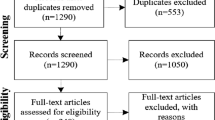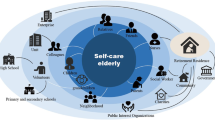Abstract
Pen-based user interface (PUI) has drawn significant interest, owing to its intuitiveness and convenience. While much of the research focuses on the technology, the usability of a PUI has been relatively low since human factors have not been considered sufficiently. Scenario-centric designs are ideal ways to improve usability. However, such designs possess some problems in practical use. To cope with these design issues, the concept of “interface scenarios” is proposed in to facilitate the interface design, and to help users understand the interaction process in such designs. The proposed scenario-focused development method for PUI is coupled with a practical application to show its effectiveness and usability.
Similar content being viewed by others
References
Abowd GD, Atkeson CG et al (1996) Teaching and learning as multimedia authoring: the classroom 2000 project. In: Proceedings of the fourth ACM international conference on multimedia, Boston, USA, pp 187–198
Anoto AB Company [OL] (2003) http://www.anoto.com
Carroll JM (1999) Five reason for scenario-based design. In: Proceedings of the 32nd Hawaii international conference on system sciences
Carroll JM (2002) Scenarios and design cognition. In: APCHI2002, Oct 23–26, Beijing, China, pp 23–46
Elrod S, Bruce R et al (1992) LiveBoard: a large interactive display supporting group meetings, presentations, and remote collaboration. In: Proceedings of the ACM conference on human factors in computing systems: CHI’92, Monterey, Canada, pp 599–607
Go K, Carroll JM, Imamiya A (2004) The blind men and the elephant: views of scenario-based system design. J Interactions 6:45–53
Gould JD (1995) How to design usable systems. In: Readings in human–computer interaction: toward the year 1995, pp 93–121
Jacobson I, Christersson M, Jonsson P, Overgaard G (1992) Object-oriented software engineering: a use-case driven approach. Addison-Wesley, Reading
Li Y (2002) Research on pen-based user interfaces—theory, technique and implementation. PhD dissertation
Landay JA, Myers BA (2001) Sketching interfaces: toward more human interface design. IEEE Comput 34(3):56–64
Mynatt ED, Igarashi T, Edwards WK, LaMarca A (1999) Flatland: new dimensions in office whiteboards. In: Proceedings of CHI’99 human factors in computing systems, ACM, pp 346–353
Potts C, Takahashi K, Anton AI (1994) Inquiry-based requirements analysis. IEEE Softw 11(2):21–32
Rosson MB, Carroll JM (2002) Scenario-based design. In: Jacko JA, Sears A (eds) The human–computer interaction handbook. Erlbaum, New Jersey, pp 1032–1050
Sutherland IE (1963) SketchPad: a man-machine graphical communication system. In: AFIPS spring joint computer conference, pp 329–346
Wang J (2003) Human–computer interaction research and practice in China. J Interactions 10(2):88–96
Wang XC (2006) Agile development for pen-based E-form. PhD dissertation
Author information
Authors and Affiliations
Corresponding author
Rights and permissions
About this article
Cite this article
Wang, D., Dai, G., Wang, H. et al. Scenario-focused development method for a pen-based user interface: model and applications. J Supercomput 46, 139–149 (2008). https://doi.org/10.1007/s11227-007-0161-1
Received:
Accepted:
Published:
Issue Date:
DOI: https://doi.org/10.1007/s11227-007-0161-1




